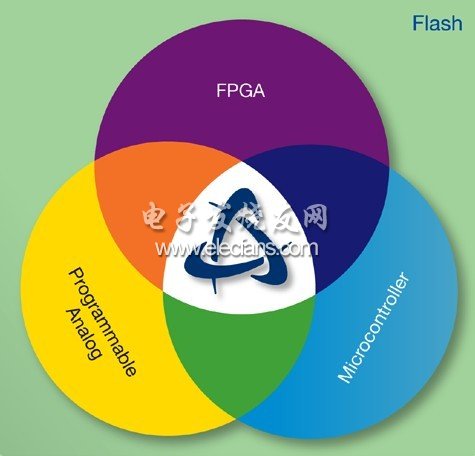If there is a typical or generic embedded system application in the world, the mainstream semiconductor company's product catalog will be much thinner. Designers now have to choose from a variety of processor architectures (most embedded system designs are centered around the processor core), and the choice of peripherals, communication ports, and analog functional combinations is almost limitless. This is precisely the problem of the diversity of embedded applications: although there are so many standard ports to choose from, few designers can finally achieve a single-chip solution. Their choices are often microcontrollers with a large number of auxiliary chips, often including programmable logic to provide the specific logic functions that the microcontroller lacks, and analog ICs that act as actual signal interfaces. One of the reasons designers rarely implement single-chip solutions is that they can only choose between a limited set of predefined features. Other reasons include the flexibility to respond to design changes: the more precise the function matches the initial specifications, the less space there is in the future to adapt to changing requirements as the project progresses. However, once the solution is to be implemented with multiple chips, the issue of design security is highlighted. Because the inter-chip wiring board level is exposed and the MCU code and/or FPGA configuration data is not encrypted, the entire design is easily pirated. F2: Programmable analog modules in SmartFusion (including: 1% ADC and DAC, up to 3 12-bit ADCs with 600 Ksps, up to three 12-bit first-order sigma delta DACs, up to 10 50 ns high speed comparator with integrated temperature, voltage and current monitoring.) Actel's strategic investment in non-volatile flash technology brings together the integration of three distinct technologies. The advantage is quite obvious: the flash programming device permanently stores its programmable logic configuration data and microcontroller program code on-chip so it can be powered up without waiting for the configuration data to be loaded from the adjacent EEPROM. This also greatly helps solve intellectual property (IP) security issues, because configuration data is no longer exposed by inter-device transfers, thereby avoiding being intercepted or stolen. A further protection is factory protection, ie once the flash is programmed it is permanently locked to prevent it from being read, which is the FlashLock function on Actel devices. In addition, because flash-based ICs can program small batch devices or program devices within the system at the end of the manufacturing process, they are suitable for many typical small and medium-sized production scale embedded designs. This silicon process technology has other advantages. Compared to pure logic CMOS processes, flash requires high voltage for programming and erasing, so it has built-in monitoring capability for high analog voltage levels. Aite's process enables isolation between on-chip modules (through a three-well structure), allowing analog and digital blocks to be placed side-by-side without disturbing each other. Although this is a mixed-signal environment, the analog function maintains excellent parametric and noise specifications. F3: Microcontroller Subsystem
The programming and test software 907 PC 33 serves to
create programs for the ABB Procontic T200, ABB Procontic
CS31 and Advant Controller 31 programmable logic
controllers (PLCs). An installation program that functions
largely automatically installs the software package
on the PC.
This specification is valid for 907 PC 331/332. Following
table gives an overview of the different PLC systems and
the pertinent software packages:
PLC system programmable with:
ABB Procontic T200 907 PC 332
ABB Procontic CS31 907 PC 331
Advant Controller 31 907 PC 331
The programming and test software 907 PC 33 is executable
on:
commercially available, IBM–compatible personal
computers with the following technical
features:
â— at least 4 Mbyte RAM for optimum performance
â— Hard disk drive
â— Diskette drive, 3 1/2", 1.44 MB
◠EIA RS–232 serial interface for the PLC system
â— Parallel or second serial interface for printer
◠MS–DOS operating system V5.0 or higher
â— Optionally a mouse for fast cursor control
ABB Procontic ABB Procontic,ABB High Voltage Electric Motor Xiamen The Anaswers Trade Co,.LTD , http://www.answersplc.com
With the introduction of the Actel SmartFusion device, designers can now use a single-chip solution to deliver the long-awaited combination of programmable logic, programmable analog circuitry and a powerful industry-leading 32-bit architecture microcontroller core. Most importantly, having an equally comprehensive tool chain supports the device's extensive flexibility (both analog and digital functions can be customized) combined with the software programmability of the ARM Cortex-M3 processor. 
